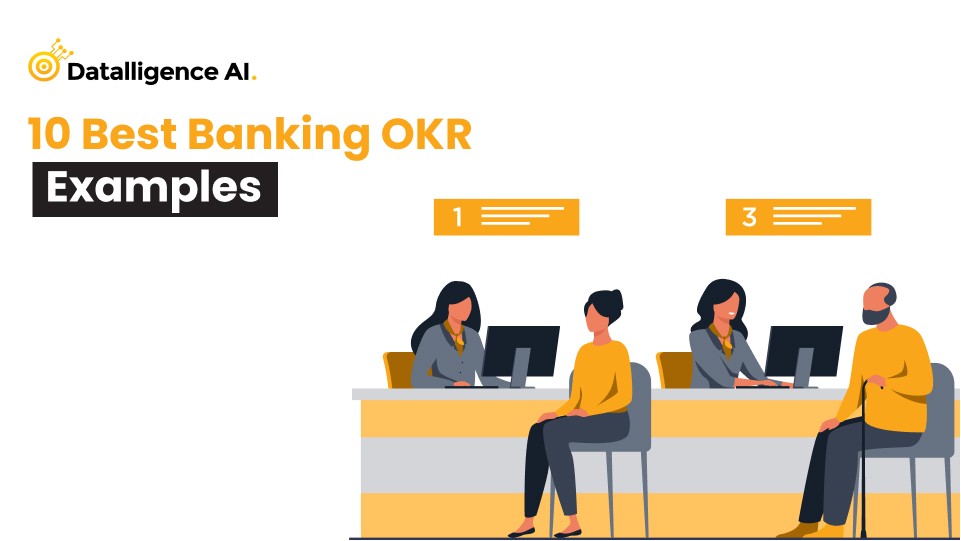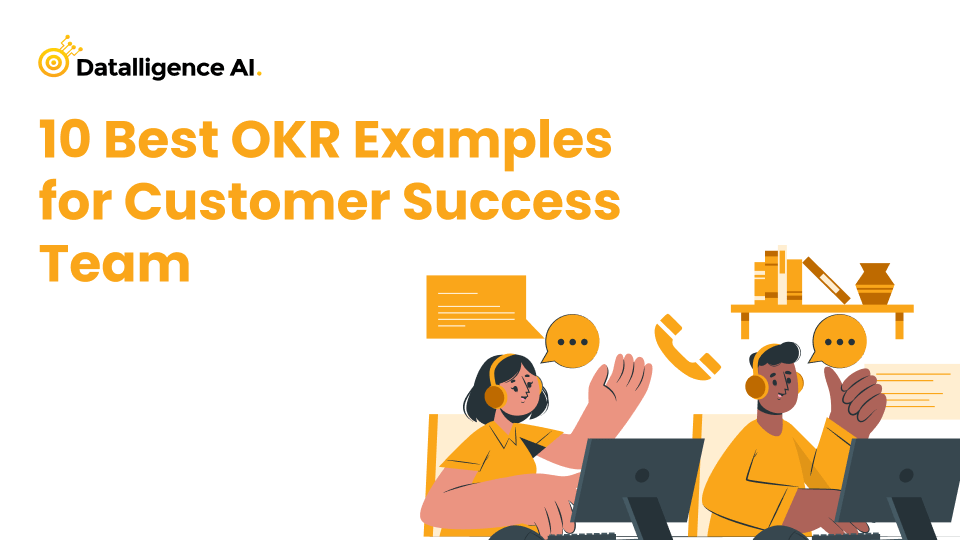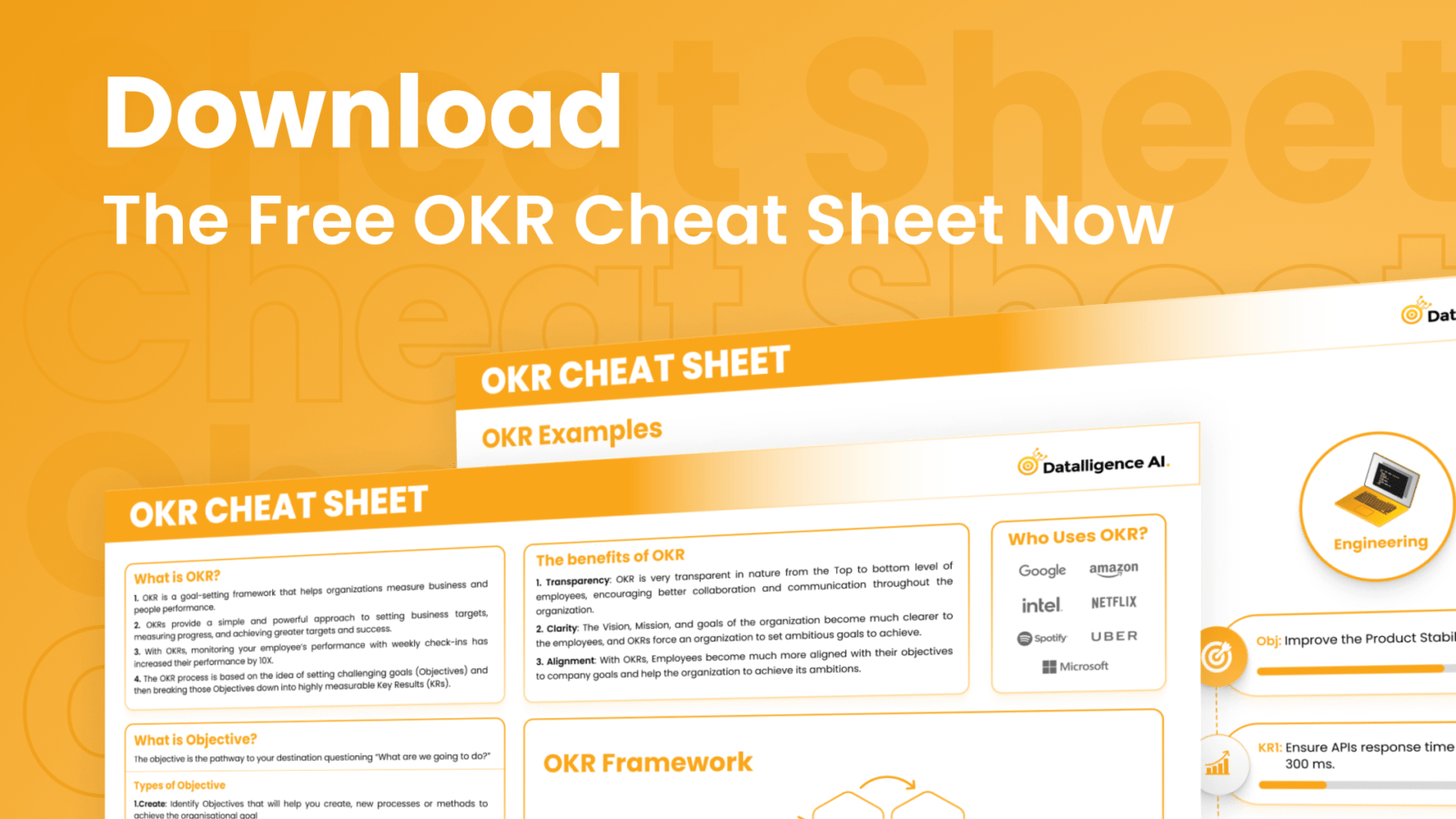Sustaining performance has become a growing challenge for many organizations. The rise of AI, automation, and hybrid work models has dramatically changed how companies operate. Employees are adapting to new technologies, rapid changes in workflows, and shifting expectations—often leading to fatigue and uncertainty. In this fast-moving environment, understanding the purpose of performance management process is essential to maintain focus, productivity, and engagement.
Organizations today aim to innovate, scale, and stay profitable. To do that, they must track performance consistently and make data-driven decisions. Some industries are growing fast and need to scale quickly to meet demand, while others must rethink their strategies to remain competitive in changing markets.
In both cases, companies rely on an agile and consistent
To see how objectives and key results (OKR) can help sustain performance in your company, first we shall see in detail the wonders of OKR.
What is OKR?
OKR is a goal-setting and goal-alignment framework that helps organizations, teams, and individuals define measurable goals and track their objectives. While keeping track of employees’ objectives, OKRs also help to align employees’ goals and objectives with company objectives to ensure that all the efforts don’t go wasted. By aligning themselves with the company’s objectives, employees understand that achieving success is not an individual performance but a team performance.
When used in this way, OKRs can help teams concentrate on aspirational goals and achieve more than they had originally anticipated, even if they fall short of the stated goal. Teams and individuals can use OKRs to prioritize their work, step outside their comfort zones, and learn from their successes and failures. OKR helps companies bridge the gap between strategy and execution and move from an output- to an outcome-based approach to work.
With the help of OKRs, managers and higher authorities can have a view of each employee’s performance and evaluate it based on it. It also gives a chance to the managers to have an eye on the team to see if they face any obstacles or roadblocks. OKR is a simple yet powerful tool for setting business targets, measuring progress, and achieving greater targets and success.
Key for sustaining performance in your company
During and after the pandemic, the major roadblock that most organizations face is issues in sustaining performance.
Now lets us see how OKR can solve this challenge: OKR is the perfect tool for achieving sustained and improving performance. OKR is a goal-setting framework that enables organizations to
Building a Culture of High Performance with OKRs
Organizations today are under constant pressure to perform—amid evolving tech, competitive shifts, and changing work models. A well-defined purpose of performance management process is no longer a nice-to-have, but a business-critical strategy. One of the most effective frameworks that supports this process is the OKR (Objectives and Key Results) methodology. When implemented right, OKRs help organizations align teams, improve focus, and drive accountability at every level.
Here’s how OKRs contribute to a more effective performance culture
1. Employee Awareness and Alignment
OKRs work best when everyone in the organization understands their role in achieving the bigger vision. Every individual objective should map back to the organization’s key priorities, ensuring that all efforts are coordinated toward shared outcomes.
This kind of visibility builds a performance-first mindset and is central to the purpose of performance management process. When employees input and track their progress using OKR software like Datalligence, they become more aware of how their daily work impacts business success. It’s not just about completing tasks—it’s about making meaningful progress.
As John Heywood famously said, “Rome wasn’t built in a day.” Likewise, long-term business success is built through consistent, aligned contributions from everyone.
2. Two-Way Communication and Continuous Feedback
Employees often disengage not because of lack of skill, but due to a lack of communication. Traditional models of top-down goal setting limit collaboration and feedback, which are essential for continuous improvement.
OKRs introduce rhythm and structure to conversations through regular check-ins. These aren’t just status updates—they’re opportunities to discuss roadblocks, celebrate small wins, and realign when needed. When embedded into the purpose of performance management process, these check-ins help leaders offer timely support and recognize performance before issues escalate.
Using Datalligence, teams can track progress and feedback in real-time—making every interaction more meaningful and outcome-driven.
3. Transparency Across the Organization
Transparency is fundamental to trust and engagement. With OKRs, goals are visible across teams and departments, ensuring alignment and breaking down silos. When employees can see how their peers and leaders are progressing, it fosters shared accountability and encourages collaboration.
This level of transparency also empowers decision-makers to identify risks early and pivot strategy based on real-time data.
Datalligence OKR software supports this by offering visual dashboards that track progress, show dependencies, and highlight potential delays—making the performance journey more transparent and data-informed.
4. Shifting Focus from Tasks to Outcomes
Many employees fall into the trap of getting buried in day-to-day tasks without understanding the bigger picture. OKRs help shift that mindset. Instead of measuring effort, OKRs emphasize outcomes.
This shift brings clarity on what truly matters. Employees begin to prioritize high-impact work that contributes to objectives, rather than just checking off tasks. It sharpens focus, reduces burnout, and improves overall effectiveness.
When organizations make this outcome-based approach a core part of their purpose of performance management process, they create a results-oriented culture where every task has a purpose.
5. Promoting Ownership and Accountability
OKRs empower teams to own their performance. Because every objective is tied to measurable key results, employees can monitor their own progress and stay accountable.
This self-driven model boosts engagement and motivation. Employees feel in control of their contributions and take initiative to improve or pivot when needed. Managers, on the other hand, get a clearer view of individual and team performance, which enhances the quality of feedback and performance reviews.
Over time, this creates a culture of high ownership—where people are not just responsible for tasks, but for outcomes.
Are OKRs a Tool for Performance Management?
OKR and performance management are both fundamentally different. While performance management focuses on assessing the performance of each employee and reviewing employees at the individual level, OKR doesn’t assess and review performance. OKR acts as a goal-setting framework and aligns goals that push the employees and organization to achieve their big goals.
While performance management is only used for assessing performance, OKR is used for goal setting and helps managers assess employees’ performance levels
How Often Should Performance Evaluations Be Performed?
The frequency of performance evaluations has evolved over time. Gone are the days of once-a-year reviews being the only standard. In today’s fast-paced and agile work environments, evaluating performance more frequently helps align goals, improve engagement, and course-correct early.
Here’s a quick breakdown:
Annual Reviews
Still relevant for compensation, promotions, and long-term planning. But not enough on their own.Quarterly Reviews
Ideal for OKR-based organizations. They align with quarterly goal-setting cycles and allow for more real-time performance feedback.Monthly Check-ins
Great for continuous feedback and coaching. These keep performance conversations alive and address issues before they snowball.Weekly or Bi-weekly 1:1s
These are more informal, but incredibly powerful for immediate feedback, alignment, and team morale.
Best Practice:
Combine formal quarterly reviews with monthly or bi-weekly check-ins for a balanced and agile performance management process. This keeps your team aligned, motivated, and continuously improving.
The key difference between OKR and purpose of Performance Management Process

Conclusion:
OKRs are not a replacement for performance management; rather, OKRs are a step above in the sense of goal setting and goal alignment. OKR pushes the entire organization towards achieving its big set of goals, and side by side, it also helps assess each performance to evaluate it. The fundamental idea behind OKRs is to establish inspiring goals and measurable key results. So, through efficient implementation, an organization can achieve performance with OKRs. Talk to our coaches to start your free trial.











